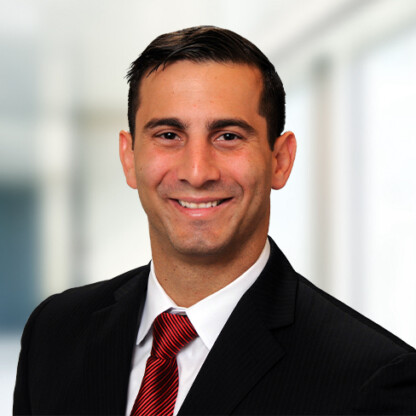
Last week, CMS proposed two significant changes to remote patient monitoring (RPM) services reimbursed under the Medicare program. The changes, part of the proposed 2020 Physician Fee Schedule, have been hotly anticipated by digital health providers hoping to see more clarity and flexibility for RPM services.
The creation of new RPM codes at the beginning of 2019 (CPT Codes 99457, 99454, and 99453) was a big step forward to expanding patient digital health and improve health care delivery, outcomes, and cost management. Questions remained on how to properly use and bill the new RPM codes, and what business and staffing models are required by Medicare. Providers asked if RPM must be billed incident to a professional’s services under direct supervision, or if they could use general supervision similar to Chronic Care Management (CCM) services? What types of RPM devices are covered under the practice expense codes of CPT Codes 99454 and 99453? May patients manually enter data into a RPM device? And why is CPT Code 99454 billed on 30 day cycle while CPT Code 99457 is billed on a monthly basis? While CMS did not address all of these questions in the proposed Physician Fee Schedule rule, it did offer some helpful clarity and propose expanding Medicare RPM services in two significant ways: 1) allowing RPM to be delivered under general supervision; and 2) creating a new add-on code for patients who receive more than 20 minutes per month of RPM services.
RPM Can Be Delivered Under General Supervision
This is arguably the single most important and beneficial change for digital health in the entire proposed 2020 Physician Fee Schedule. When CMS first created the RPM codes, they stated RPM could not be delivered incident to, reasoning that CPT code 99457 describes professional time and “therefore cannot be furnished by auxiliary personnel incident to a practitioner’s professional services.” An incident to service is one that is performed under the supervision of a physician (broadly defined), and billed to Medicare in the name of the physician, subject to certain requirements. Subsequently, CMS issued a technical correction allowing incident to billing of RPM services by auxiliary personnel under direct supervision. Direct supervision means the physician and auxiliary personnel must be in the same building at the same time (albeit not the same room). General supervision, in contrast, does not require the physician and auxiliary personnel to be in the same building at the same time, and the physician could instead use telemedicine to exert general supervision over the auxiliary personnel.
Industry insiders advocated for changing the RPM rules to expressly allow incident to billing of RPM under general supervision and CMS concurred. Under the proposed rule, RPM services reported with CPT codes 99457 and 994X0 may now be furnished under general supervision rather than the currently required direct supervision. The physician or other qualified healthcare professional supervising the auxiliary personnel need not be the same individual treating the patient more broadly. However, only the supervising physician or other qualified health care professional may bill Medicare for the incident to services.
Changing the RPM rules to expressly allow incident to billing of CPT code 99457 under general supervision greatly expands the potential operations and business models associated with RPM services, thereby allowing more patients to enjoy the quality-improving benefits of remote patient monitoring.
New RPM Code for Extra Minutes
CMS has also proposed changing CPT code 99457 to only cover the initial 20 minutes of monitoring services, while a new CPT code 994X0 would be used as an add-on code for those patients who receive additional 20 minutes intervals of RPM. CMS did not address how often the new add-on code 994X0 can be billed per month, or if there is a maximum limit. CMS has proposed a work RVU of 0.50 and direct PE inputs for the new add-on code. The proposed code descriptions are as follows:
- CPT code 99457 (Remote physiologic monitoring treatment management services, clinical staff/physician/other qualified health care professional time in a calendar month requiring interactive communication with the patient/caregiver during the month; initial 20 minutes)
- New CPT code 994X0 (Remote physiologic monitoring treatment management services, clinical staff/physician/other qualified health care professional time in a calendar month requiring interactive communication with the patient/caregiver during the month; additional 20 minutes)
What to Do Next?
Providers, technology companies, and virtual care entrepreneurs interested in RPM should consider providing comments to the proposed rule. CMS is soliciting comments on the proposed rule until 5:00 p.m. on September 27, 2019. Anyone may submit comments – anonymously or otherwise – via electronic submission at this link. Alternatively, commenters may submit comments by mail to:
- Regular Mail: Centers for Medicare & Medicaid Services, Department of Health and Human Services, Attention: CMS-1715-P, P.O. Box 8016, Baltimore, MD 21244-8016.
- Express Overnight Mail: Centers for Medicare & Medicaid Services, Department of Health and Human Services, Attention: CMS-1715-P, Mail Stop C4-26-05, 7500 Security Boulevard, Baltimore, MD 21244-1850 (for express overnight mail).
If submitting via mail, please be sure to allow time for comments to be received before the closing date.
Conclusion
The CMS proposed rule advances the ability of RPM services to drive revenue and improve the patient care experience. CMS also has the ability to issue subregulatory guidance such as FAQs, and we will continue to monitor CMS for any rule changes or guidance that affect or improve RPM opportunities.
For more information on telemedicine, telehealth, virtual care, remote patient monitoring, digital health, and other health innovations, including the team, publications, and representative experience, visit Foley’s Telemedicine & Digital Health Industry Team.

